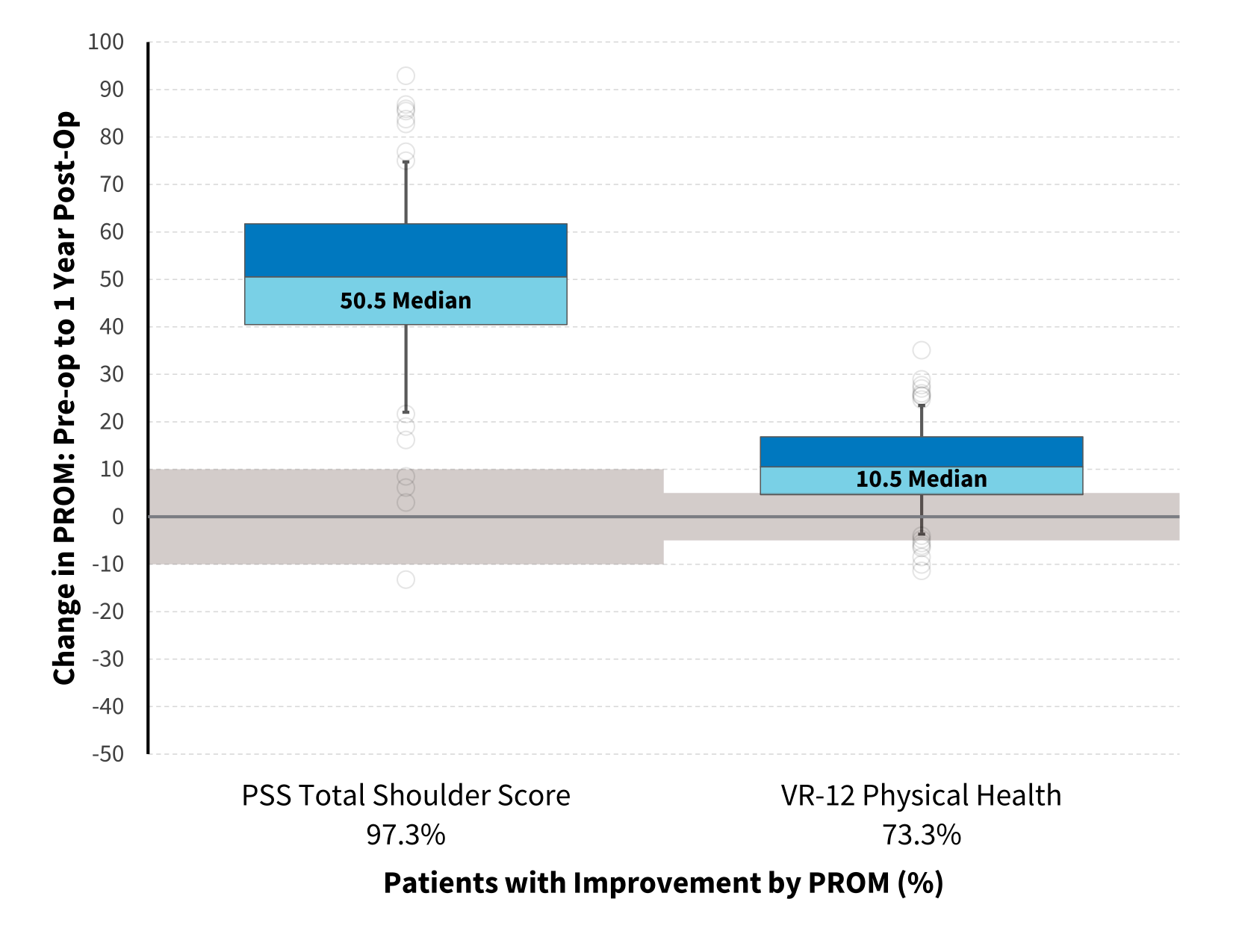Orthopaedic & Rheumatologic Institute Outcomes
Shoulder
Total Shoulder Arthroplasty
Patient-Reported Outcome Measures 1 Year After Primary Unilateral Total Shoulder Arthroplasty for Osteoarthritis from the Prospective OME Cohort
2021-2022 (N = 204, 73.5% follow-up)
In 2021, 13 distinct surgeons performed primary unilateral total shoulder arthroplasty (TSA) surgery on 204 patients with shoulder osteoarthritis (OA) at specific sites where the prospective Cleveland Clinic OME Cohort was active. Of these patients, 90.2% completed patient-reported outcome measures (PROMs) at baseline and 73.5% followed up at 1 year. The average patient age was 62.2 years and 61% were male.
97.3% of patients experienced improvement in overall shoulder pain, function, and satisfaction after one year with a median absolute improvement of 50.5 points. This was measured by the Penn Shoulder Score¹ (PSS) total score, which ranges from 0-100 points (higher scores indicate less shoulder pain, better shoulder function, and greater shoulder satisfaction) and has a minimal clinically important difference (MCID) of 10.0.
73.3% of patients experienced improvement in overall physical health with a median absolute improvement of 10.5 points. Physical health was measured by the Veterans RAND 12-Item Health Survey² (VR-12), which is a norm-based scale where 50 represents the mean score of a nonpatient control group and every 10 units represents 1 standard deviation from the mean. The MCID is estimated at 5.0.

The box plot illustrates patients' one-year outcomes with respect to two separate PROMs: a total shoulder score that encompasses pain, function, and satisfaction; and overall physical health. Here, "improvement" means that the change in score from pre-op to post-op exceeds the MCID for a PROM and is represented by the shaded region around the horizontal axis. The center horizontal line of each box represents the median change in PROM score, while the boxed regions above and below the center line represent the middle 50% of patients. Error bars represent 95% of patients and circular bubbles represent outliers.
- Leggin BG, Michener LA, Shaffer MA, Brenneman SK, Iannotti JP, Williams GR Jr. The Penn shoulder score: reliability and validity. J Orthop Sports Phys Ther. 2006 Mar;36(3):138-51. doi: 10.2519/jospt.2006.36.3.138.
- Kazis LE, Miller DR, Skinner KM, Lee A, Ren XS, Clark JA, Rogers WH, Spiro A 3rd, Selim A, Linzer M, Payne SM, Mansell D, Fincke RG. Patient-reported measures of health: The Veterans Health Study. J Ambul Care Manage. 2004 Jan-Mar;27(1):70-83.
